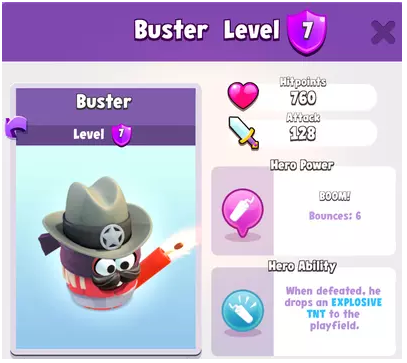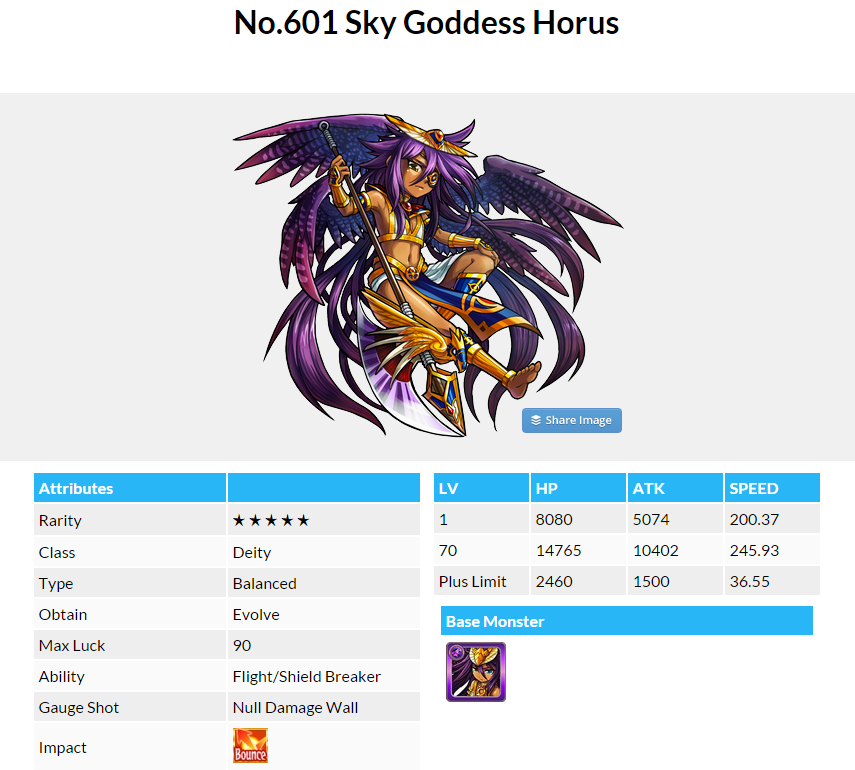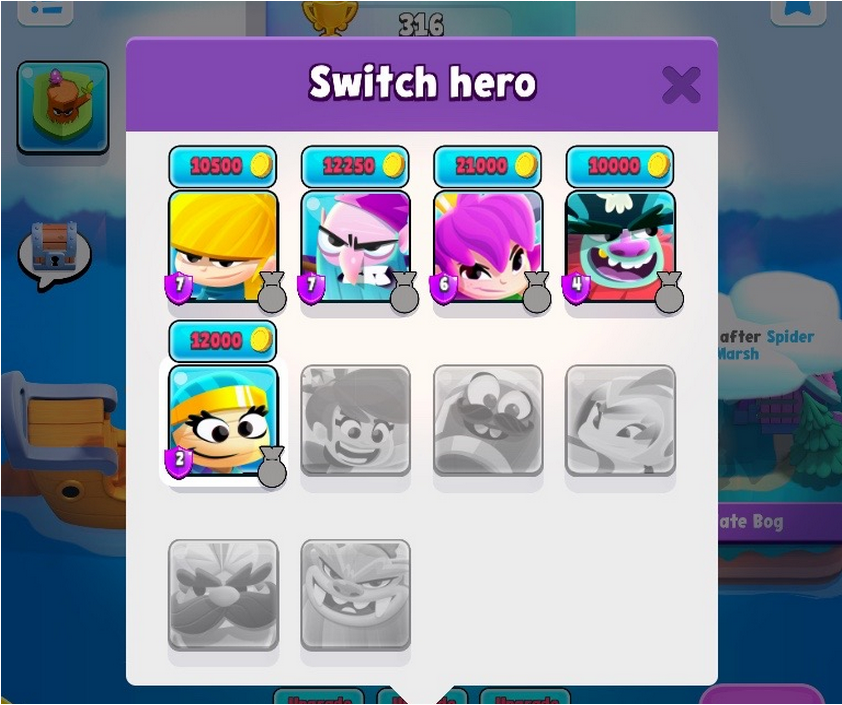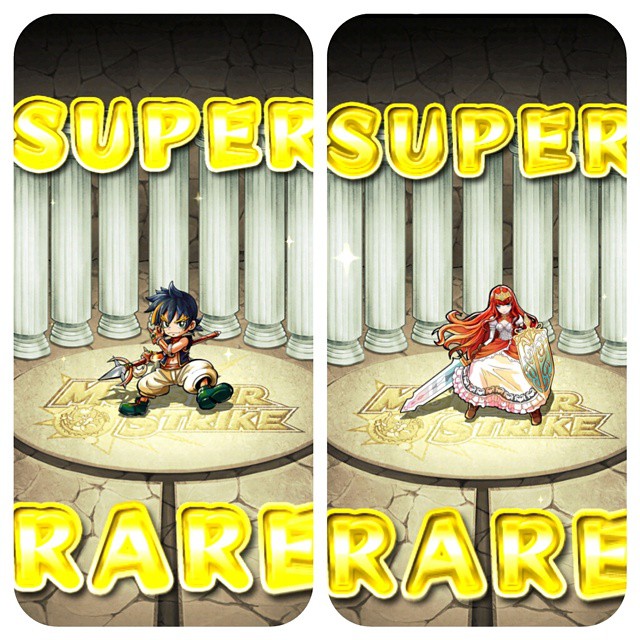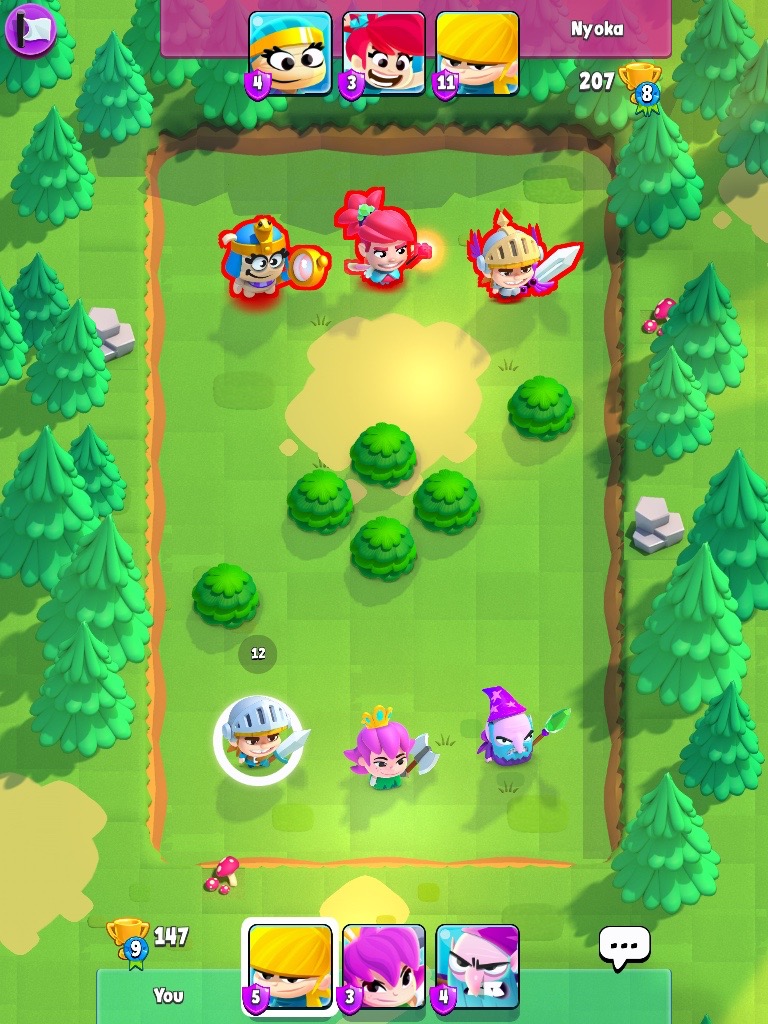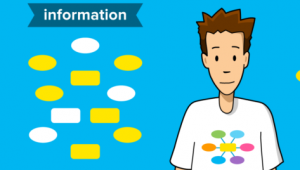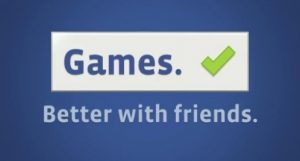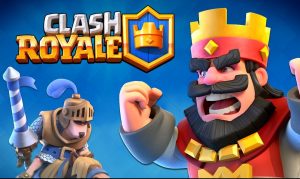Deconstructing Smash Land: Is it too Simple?
Supercell’s most recent soft launch is called Smash Land. It’s been in soft launch phase in Canada and Australia since March 31st 2015 (About 2 months from this post). There is no doubt that Supercell’s soft launches are huge news for the mobile free to play industry. Supercell is notoriously picky about what games that make it to soft launch. Each new game goes through rigorous internal feedback, and only the best games survive. The games that hit soft launch are games that Supercell genuinely believes have a shot at the Top Grossing charts.
Smash Land is based on “Monster Strike”, a massive mobile free to play game in Japan. In December 2014 it took over Puzzles and Dragons’ top spot in the Japanese charts. Similar to how Supercell started Clash of Clans with looking at Backyard Monsters, Supercell now looks to simplify the design of Monster Strike so that it could work in the Western markets. But in Supercell’s simplification of a game that performs so well in Japan, has the game stayed intact?
Has what remains kept what is required to be a successful game?
Smash Land’s Core Battle
Supercell decided to keep core battle game the same as Monster Strike. The core battle mechanic is a Physics-based RPG battle. Almost like a game of pool, the game is mostly about predicting how balls on a flat surface will bump and move to create a preferred outcome. In Smash Land, the game is about lining up one of your characters so that it bounces between walls, enemy characters and your own characters as many times as possible. The player then collects up to 10 different heroes, each with their own special ability. For an overview of the mechanic, watch this video:
Overall the core battle feels smoother, cleaner and is much easier to understand than Monster Strike. Each character feels unique because of their special abilities which feels great.
The gameplay is very strong for a mobile F2P game. Its easy to pick up and understand for any player. The feeling of skill is strong — I can predict a few bumps and feel smart about setting up strong combos. On top of this, because of the nature of physics, Luck comes into play. Like Peggle, physics is usually pretty easy to predict after the first shot, but after the first few collisions it becomes almost impossible to predict the outcome. As a result each move can result in some “Post-Action Luck” which is critical for casual games. Players feel smart and each shot is unpredictable.
Overall they’ve taken the best bits of Monster Strike and applied it to a more focused experience. It’s a great battle system that is easy to get addicted to.
Heroes
Outside of the battle, players can also engage in upgrading their heroes stats. This is really where Smash Land departs from Monster Strike.
Monster Strike contains far more variety of stats for each character:
Just comparing these two screens you can see the dramatic comparison between the games. Its much easier to understand Smash Land compared to Monster Strike.
However, at what cost is this simplicity? In Smash Land the major differences between the characters are special abilities and their health to damage ratio. In Monster Strike, the team you bring into battle requires far more strategy as you progress in the game.
You need a balance of elemental types on top of ensuring you’ve got strong special abilities that are complementary. My guess is that while Supercell’s game clearly scores points for understandability, it will seriously limit the long term replayability of the game compared to Monster Strike. Players just won’t have nearly as much to strategize about in the long run.
Smash Land also departs from Monster Strike in how upgrades are handled.
Heroes are upgraded with gold and time. So the player collects gold from playing matches or collecting them from treasure hunts, and turns this gold into upgrades to their heroes. The cost of each upgrade escalates very quickly. As a result, the game really starts to require many, many battles before you can afford a single upgrade.
Smash Land’s system is far simpler than Monster Strike. Monster Strike takes cues from Japanese Gatcha games like Puzzles and Dragons. To upgrade your heroes you must collect hundreds of characters and consume them to give experience points to your heroes. For a great overview of Gacha, read here.
Leaving the Gatcha system out for Smash Land is a big risk, what remains is a far too simple economy that quickly becomes a grind.
Monster Strike’s system with consuming & collecting monsters has a massive advantage in the long run compared to Smash Land. Instead of just 10 heroes, Monster Strike has almost 1000 collectable monsters in the game (source). With this massive set of monsters, they have created a system where players have much more excitement for the long run.
As I’ve spoken about before, to alleviate the feeling of grinding it’s all about creating random spikes of progression. Similar to games like Diablo you need to find ways to add luck to your progression. Ensure that each battle can result in a lucky outcome which could dramatically increase their pace of progression. In Diablo this could be finding a legendary weapon on the ground which makes it a breeze to beat the enemies following.
In Monster Strike, instead of powerful rare swords, players can randomly get awarded rare monsters from the gatcha system. The player now feels lucky, like the game gave them something for free that should have cost them real money or a lot of time. Because the player got this rare monster, they can rush through previously hard levels and feel great.
Overall the rate of progression may be slow, but because there are these moments where progression randomly spikes, players are far more likely to engage for a long time.
This variable progression is missing in Smash Land. To progress, you must upgrade your heroes in a linear path. Each victory gives you a calculated amount of rewards. The cost of upgrading a hero grows each time.
Overall, with only 10 heroes and very limiting upgrades, the metagame is just too simple. I have the same heroes as everyone else, the same upgrades as everyone else, so there is no moment where I feel like I’ve got a really unique set of heroes that are more amazing than my opponents. Without this unique feeling, it is hard to get attached to my characters or get attached in the long run.
Desirable Stats
Smash Land removed plenty from Monster Strike when they simplified the heroes/monster collection structure. But regardless of how many collectable characters you have in your game, if you want players to engage in an upgrade system you need to ensure that those upgrades are desirable.
In Smash Land my drive to upgrade is very weak. The battle overall feels very Skill & Luck driven (as I described above). The outcome of battles has more to do with getting repeated bounces over how much each player’s heroes had levelled up. In many cases I won with far fewer levels than my opponent, or I lost at the hands of an opponent that had far fewer hero levels than me. This translates in less player demand for upgrading their heroes. Instead of having a strong desire to have the strongest possible team, players will blame victories on their skill or luck and will more likely be content with their team as is. This is a difficult balance to get right in any game. For more on Stats vs Luck vs Skill, read on here.
But for this game, where its whole monetization plan is dependant on players upgrading their characters, Stats must take more precedence in the outcome of a battle.
If the player has a decreased desire to upgrade their heroes, then this will break how the game monetizes. Hero upgrades are at the core of how this game makes money. Players grind for coins (or spend money), on top of have long timers (8 hours or more) to upgrade their characters. After spending money in the game, speeding up the upgrades all of my characters substantially, I really didn’t feel any more powerful in the game. I lost subsequent multiplayer battles, and was now facing an even higher upgrade cost for my heroes. In the end spending money in the game really just didn’t feel worthwhile.
Overall Thoughts
If this wasn’t launched by Supercell, this game would never have gone under so much scrutiny. The game on its own is polished, fun to play, and ticks all the boxes for being a successful free to play game:
- Strong Pacing of content
- Multiplayer gameplay to provide long tail retention
- Guilds to bring players together without requiring Facebook
- A simple game mechanic that’s easy to pick up and play, hard to master
But when you put them all together in this game, the metagame is too simple:
- There is not enough variety or strategy in choosing heroes
- Upgrading quickly becomes tedious and a long grind
- There is not enough desire to upgrade your team to compete at the highest level
So how will this do on the market?
So far it seems Supercell is keeping this game in a quiet soft launch. Comparing this soft launch to Boom Beach, by 2 months Boom Beach was higher in both the download charts and grossing charts within Canada (source:AppAnnie). That points to Supercell keeping the marketing costs & number of new users down for the time being while they improve the game. Supercell is very rigorous with their soft launch games. Just last year they released “Spooky Pop” which failed to hit their targets. As a result they decided to cancel the game.
Can Supercell turn this game around during the soft launch? I think it will be difficult. They cut so much away from what made Monster Strike work, its hard to see if small feature additions will be able to rebuild what’s necessary. It will only happen if they completely rebuild their Hero progression systems.
I think Smash Land should be an example for all future mobile game designers. Simplicity can open up to wider markets, but the focus on Free to Play must be on long term retention, not the widest audience. Game designers must strive to create enough longterm depth in their metagames, or else they will fail.



